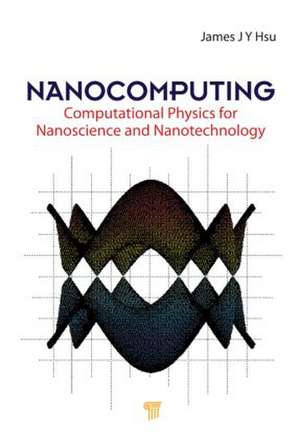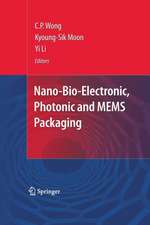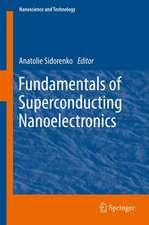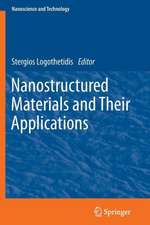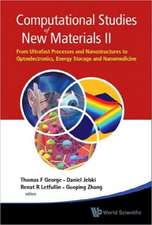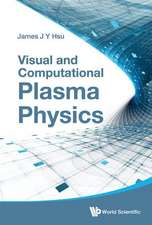Nanocomputing: Computational Physics for Nanoscience and Nanotechnology
Autor Jang-Yu Hsuen Limba Engleză Hardback – 31 mar 2009
Preț: 845.60 lei
Preț vechi: 1031.22 lei
-18% Nou
Puncte Express: 1268
Preț estimativ în valută:
161.82€ • 175.72$ • 135.93£
161.82€ • 175.72$ • 135.93£
Carte tipărită la comandă
Livrare economică 23 aprilie-07 mai
Preluare comenzi: 021 569.72.76
Specificații
ISBN-13: 9789814241267
ISBN-10: 9814241261
Pagini: 368
Ilustrații: 8 b/w images and 59 color images
Dimensiuni: 152 x 229 x 23 mm
Greutate: 0.7 kg
Ediția:1
Editura: Jenny Stanford Publishing
Colecția Jenny Stanford Publishing
ISBN-10: 9814241261
Pagini: 368
Ilustrații: 8 b/w images and 59 color images
Dimensiuni: 152 x 229 x 23 mm
Greutate: 0.7 kg
Ediția:1
Editura: Jenny Stanford Publishing
Colecția Jenny Stanford Publishing
Public țintă
Academic and PostgraduateCuprins
Little Big Science. Tools for Analysis. Mesoscopic Systems. Analytical Chapter. Numerical Chapter. Nonlinear Many-Body Physics and Transport. OOP, MPI and Parallel Computing. Low Dimensionality and Nanostructures. Special Topics. Applications.
Recenzii
"Following an extensive motivating introduction laced with gentle humor, Hsu guides the reader of Nanocomputing on a journey through the realms of the nano-world. Addressing primarily students and scientists knowledgeable in quantum mechanics and some level of programming, he uses sample MATLAB programs to let the engaged reader experience and quantitatively reproduce many nanoscale phenomena explored by current frontier research in physics, chemistry and biology."
—Prof. David Tomanek, Michigan State University, USA
—Prof. David Tomanek, Michigan State University, USA
Descriere
This book provides a comprehensive overview of the computational physics for nanoscience and nanotechnology. Based on MATLAB and the C++ distributed computing paradigm, the book gives instructive explanations of the underlying physics for mesoscopic systems with many listed programs that readily compute physical properties into nanoscales. Many generated graphical pictures demonstrate not only the principles of physics, but also the methodology of computing.
